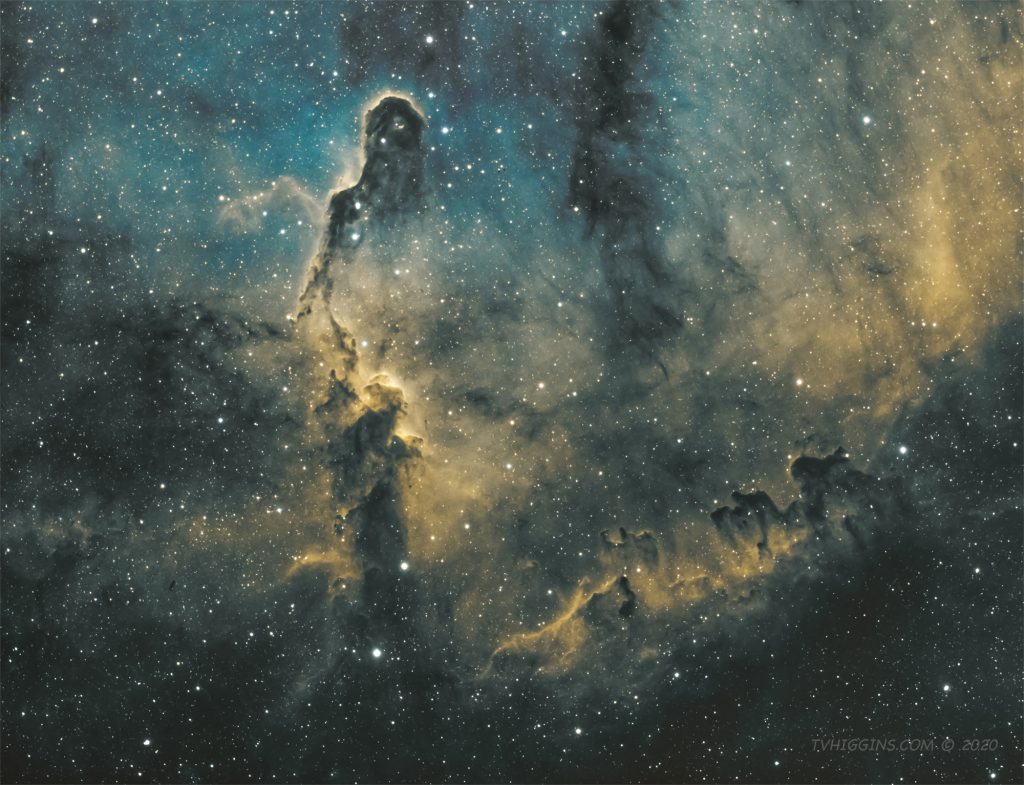- Telescope: Stellarvue SVA130T-IS
- Mount: Losmandy G-11 with Gemini 2 controller
- Autoguiding: Yes
- Optical Configuration: 0.72x field flattener & reducer (f/5)
- Filter(s): S-II (Baader 8.0-nm); H-alpha (Baader 7-nm); O-III (Baader 8.5-nm)
- Camera: ZWO ASI1600-MM Cool
- Light Frames: 115 S-II subs, 113 H-alpha subs, 124 O-III subs
- Calibration Frames: 50 darks, 100 biases, 30 flats per filter
- Total Exposure Time: 1,408 min. [(115 + 113 + 124) x 4 min.] = 23 h 28 min.
- Gain: 75
- Sensor Temperature: -10° C
- Pre-Processing: PixInsight, DeepSkyStacker
- Color Mapping: Red Channel = 100% S-II; Green Channel = 100% H-alpha; Blue Channel = 100% O-III
- Processing: Photoshop CC
- Imaging Location: Los Angeles, Calif.
The Elephant’s Trunk Nebula (IC 1396A) can be found within a much larger expanse of dust and gas (IC 1396) in the constellation Cepheus. This deep-sky object lies about 2,400 lightyears from Earth and features a majestic columnar cloud of compressed gases backlit by several newly formed stars, offering a spectacular look into the inner workings of a stellar nursery.
This image of Elephant’s Trunk was shot in the Hubble Palette, made famous by photos from the Hubble Space Telescope. It consists of three sets of 4-min. exposures (subframes) taken through narrowband optical filters designed to pass the light from singly ionized sulfur (S-II), hydrogen (H-alpha), and doubly ionized oxygen (O-III). The total exposure time through all three filters totals 23 hours and 28 minutes. It took almost two months to shoot all of the subframes for this image. The result is a very low-noise, high-signal depiction of the Elephant’s Trunk Nebula in all of its glory.

This is stunning proof that true beauty is Universal! (Pun intended)
The Perfect Gift!